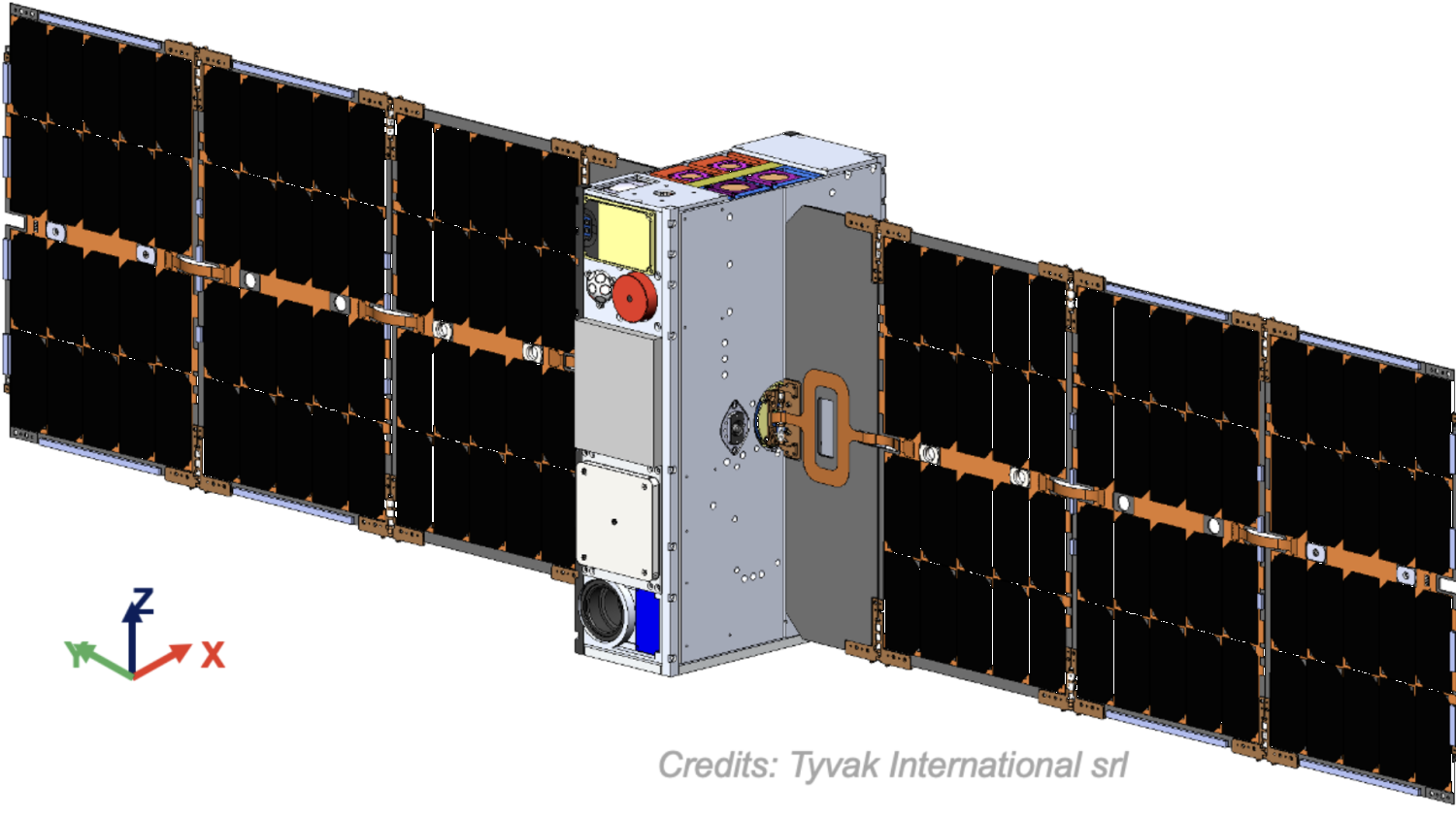Milani CubeSat for ESA Hera mission
- 1University of Helsinki, Faculty of Science, Helsinki University, Finland (tomas.kohout@helsinki.fi)
- 2Institute of Geology of the Czech Academy of Sciences, Prague, Czech Republic
- 3Tyvak International, Torino, Italy
- 4VTT Technical Research Centre of Finland, Espoo, Finland
- 5INAF-IAPS, Rome, Italy
- 6Politecnico di Milano, Milano, Italy
- *A full list of authors appears at the end of the abstract
Hera is the European part of the Asteroid Impact & Deflection Assessment (AIDA) international collaboration with NASA who is responsible for the DART (Double Asteroid Redirection Test) kinetic impactor spacecraft. Hera will be launched in October 2024 and will arrive at Didymos binary asteroid in January 2027. Milani CubeSat is developed by Tyvak International with a consortium of European Universities, Research Centers and Firms from Italy, Czech Republic and Finland. At arrival it will be deployed and will do independent detailes characterization of Didymos asteroids at distances 5 to 10 km supporting Hera observations. Milani mission objectives are i) Map the global composition of the Didymos asteroids, ii) Characterize the surface of the Didymos asteroids, iii) Evaluate DART impacts effects on Didymos asteroids and support gravity field determination, iv) Characterize dust clouds around the Didymos asteroids. The scientific payloads supporting the achiement of these objectives are “ASPECT”, a visible - near-infrared imaging spectrometer, and “VISTA”, a thermogravimeter aiming at collecting and characterizing volatiles and dust particles below 10µm.

ASPECT details:
| Channel | VIS | NIR1 | NIR2 | SWIR |
| Field of View [deg] | 10° x 10° | 6.7° x 5.4° | 6.7° x 5.4° | 5° circular |
| Spectral range [nm] | 500 – 900 | 850 – 1275 | 1225 - 1650 | 1600 - 2500 |
| Image size [pixels] | 1024 x 1024 | 640 x 512 | 640 x 512 | 1 pixel |
| Pixel size [µm] | 5.5 µm x 5.5 µm | 15 µm x 15 µm | 15 µm x 15 µm | 1 mm |
| No. spectral bands | Ca. 14 | Ca. 14 | Ca. 14 | Ca. 30 |
| Spectral resolution [nm] | < 20 nm | < 40 nm | < 40 nm | < 40 nm |
VISTA details:
|
Sensor Type |
Quartz Crystal Microbalance (QCM) |
|
Resonance frequency |
10 MHz |
|
Volume |
50mm × 50mm × 38mm |
|
Sensitive area |
1.5cm^2 |
|
Particles size detection range |
5-10 μm to sub-μm particles |
|
Methods/Technique used |
1. Dust and contaminants accumulation (passive mode) 2. TGA cycles (active mode) |
|
Mass |
90g |
Tyvak International (prime, platform), Politecnico di Torino (requirements, thermal, radiation, debris analysis), Politecnico di Milano (mission analysis and GNC), Altec (ground segment interfaces), CIRA (vehicle environmental campaign), HULD (software), VTT and University of Helsinki (ASPECT), Reaktor Space Lab (ASPECT DPU), Institute of Geology CAS and Brno University of Technology (ASPECT algorithms), and INAF-IAPS (VISTA payload development)
How to cite: Kohout, T., Cardi, M., Näsilä, A., Palomba, E., and Topputo, F. and the Milani team: Milani CubeSat for ESA Hera mission, European Planetary Science Congress 2021, online, 13–24 Sep 2021, EPSC2021-732, https://doi.org/10.5194/epsc2021-732, 2021.

